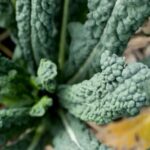Are you interested in small space vegetable gardening ideas pictures to make the most of your limited gardening area? In recent years, small space vegetable gardening has gained popularity as people seek to grow their own produce even with limited outdoor space.
The benefits of growing your own vegetables are numerous, from reducing grocery expenses to having access to fresh, organic produce right at home. In this article, we will explore various creative and practical ideas for small space vegetable gardening, including container gardening, vertical gardening, companion planting, and more.
One of the key considerations when starting a small space vegetable garden is choosing the right location. Factors such as sunlight exposure, water access, and soil quality play a crucial role in the success of your garden. Additionally, utilizing containers and raised beds can be an effective solution for small spaces.
This method allows for flexibility in placement and provides an opportunity to grow a variety of vegetables even on patios or balconies. Vertical gardening is another innovative approach that maximizes space by utilizing walls, trellises, and other vertical structures for growing vegetables.
In addition to practical tips and techniques for small space vegetable gardening, we will also showcase inspirational pictures highlighting creative layouts and designs for maximizing limited space. Whether you’re new to gardening or looking for new ideas to revamp your existing garden, this article is filled with valuable information and visually appealing inspiration for thriving in small spaces.
Choosing the Right Location
When it comes to small space vegetable gardening, selecting the right location is crucial for the success of your garden. The first step in choosing the right spot is to consider sunlight.
Most vegetables need at least 6 hours of sunlight per day, so it’s important to find a location that receives adequate sunlight. If you have limited access to sunlight in your small space, consider growing vegetables that are well-suited for partial shade, such as leafy greens or herbs.
In addition to sunlight, water access is another important consideration for small space vegetable gardening. Make sure that your chosen spot is near a water source or that you have a convenient way to water your plants regularly. Drip irrigation systems or self-watering containers can be great options for small spaces, allowing for efficient and consistent watering without taking up too much space.
Lastly, soil quality plays a significant role in the success of a small space vegetable garden. Conduct a simple soil test to determine the pH level and nutrient content of your soil. If the soil is not suitable for growing vegetables, consider using raised beds or containers filled with high-quality potting mix. These options allow you to control the soil quality and provide an ideal growing environment for your vegetables.
By carefully considering these factors when choosing the right location for your small space vegetable garden, you can set yourself up for success and maximize the yield of fresh produce from your limited space. Whether you have a balcony, patio, or tiny backyard, with proper planning and attention to detail, you can create a thriving vegetable garden no matter how small the available space may be.
For inspiration on how to make the most out of limited spaces when it comes to growing vegetables, take a look at some creative small space vegetable gardening ideas pictures online.
Container Gardening
When it comes to small space vegetable gardening, container gardening is a popular and practical option. This method allows individuals with limited outdoor space to still enjoy the benefits of growing their own produce. Here are some tips for successful container gardening in small spaces:
- Choose the Right Containers: Selecting the right containers is crucial for successful vegetable gardening in small spaces. Opt for containers that are large enough to accommodate the root systems of the vegetables you wish to grow. Additionally, ensure that the containers have proper drainage to prevent waterlogged soil.
- Best Vegetables for Container Gardening: Not all vegetables thrive in containers, so it’s important to choose suitable varieties for this method. Some excellent options for small space vegetable gardening in containers include cherry tomatoes, peppers, lettuce, radishes, and herbs such as basil and parsley.
- Soil Quality and Maintenance: When using containers for vegetable gardening in small spaces, it’s essential to use high-quality potting soil that provides adequate nutrients for plant growth. Regular watering and fertilizing will also be necessary to ensure healthy and thriving plants.
By utilizing container gardening techniques, even those with limited outdoor space can enjoy a bountiful harvest of fresh vegetables throughout the growing season.
For more inspiration and ideas on how to maximize your small space for vegetable gardening, check out our selection of small space vegetable gardening ideas pictures
Vertical Gardening
When working with a small area for vegetable gardening, utilizing vertical space can be an effective way to maximize the yield of your harvest. Vertical gardening involves growing plants upwards instead of outwards, which is ideal for those with limited space. By taking advantage of walls, trellises, and other vertical structures, you can grow a variety of vegetables in a small space.
One popular method of vertical gardening is using trellises for vine plants such as cucumbers, tomatoes, and peas. These plants naturally climb and using a trellis allows them to grow upwards rather than spreading out across the ground. Additionally, walls and fences can be used as supports for vertical planting by installing hooks or shelves to hold containers or hanging baskets. This method not only saves valuable ground space but also creates an aesthetically pleasing garden display.
For those living in urban areas or apartments with limited outdoor space, vertical gardening can also be adapted for indoor use. Wall-mounted planters or hanging baskets are great options for growing herbs and small vegetables indoors. With the right placement near a sunny window or under artificial lighting, it’s possible to create a thriving indoor vertical garden even in the smallest of spaces.
Overall, through creative design and strategic planning, it’s possible to achieve an abundant vegetable garden in even the smallest of spaces by utilizing vertical gardening methods. As seen in many small space vegetable gardening ideas pictures, this approach not only provides practical solutions but also adds visual interest to your garden space.
Companion Planting
Another benefit of companion planting in small space vegetable gardening is the conservation of space. For instance, growing tall plants like corn alongside climbing beans allows gardeners to make the most out of vertical space by letting the beans grow up the corn stalks.
This strategy effectively doubles the productivity of a small patch of land or container garden, making it a perfect solution for those dealing with space constraints. Some other popular combinations in companion planting include carrots and onions, which deter pests that commonly affect each other when grown alone.
When planning a small space vegetable garden based on companion planting principles, it’s important to take into account both the beneficial and detrimental relationships between different plant species. Careful consideration should also be given to factors such as sunlight requirements and water needs when choosing compatible vegetable combinations for a harmonious garden layout.
| Benefit | Example |
|---|---|
| Enhance crop health and yield | Tomatoes with basil |
| Conservation of space | Corn with climbing beans |
| Deterrence of pests | Carrots with onions |
Creative Layouts
Square Foot Gardening
Square foot gardening is a method of intensive planting that maximizes the use of space in a small garden. This technique involves dividing the growing area into small squares, typically 1 foot by 1 foot, and planting different vegetables in each square. By carefully planning and arranging the plants, square foot gardening can result in higher yields and efficient use of limited space.
Intercropping
Intercropping is a strategy where different types of vegetables are planted together in the same area to make the most efficient use of space. By intermingling compatible crops, gardeners can reduce empty spaces and optimize their small garden area. For example, tall growing plants like corn or tomatoes can provide shade for shorter plants such as lettuce or radishes, while also maximizing soil nutrients and reducing weed growth.
Succession Planting
Succession planting involves sowing new vegetable seeds at regular intervals to ensure a continuous harvest throughout the growing season. In a small space vegetable garden, this approach allows for multiple crops to be grown in the same area over time without overcrowding or waste. As soon as one crop is harvested, another one is ready to take its place, making the most efficient use of available space.
By considering these creative layout ideas, individuals can effectively cultivate their own fresh produce even in limited areas. These methods offer practical and ingenious solutions for maximizing space while still enjoying the benefits of growing vegetables at home. Whether it’s square foot gardening, intercropping, or succession planting, there are various options available to suit the specific needs and preferences of every small space vegetable gardener.
Best Vegetables for Small Spaces
When it comes to small space vegetable gardening, choosing the right vegetables is crucial for maximizing your limited garden space. Fortunately, there are plenty of options that are well-suited for small spaces and container gardening. By selecting compact varieties and vegetables that thrive in containers, you can enjoy a bountiful harvest without requiring a large garden plot.
Compact Varieties
When space is limited, opting for compact varieties of vegetables can help maximize the yield from your small space vegetable garden. Compact varieties are specifically bred to take up less space while still producing a good harvest. For example, look for dwarf or bush varieties of tomatoes, cucumbers, and peppers that can thrive in smaller containers or raised beds.
Container-Friendly Vegetables
Some vegetables are particularly well-suited for container gardening, making them ideal choices for small space vegetable gardens. Lettuce, spinach, radishes, and herbs like basil and parsley are all excellent candidates for container gardening. These vegetables not only thrive in pots or window boxes but can also be easily grown indoors or on balconies with limited outdoor space.
Herbs
In addition to traditional vegetables, consider incorporating herbs into your small space garden. Herbs such as chives, thyme, mint, and oregano are perfect for growing in small containers or vertical planters. Not only do they add flavor to your dishes, but they also attract pollinators and beneficial insects to your garden. Plus, they can be easily incorporated into companion planting arrangements with other vegetables.
By choosing the right vegetables for your small space garden-whether compact varieties that take up less room or container-friendly options-you can cultivate a thriving vegetable garden regardless of limited square footage. Whether you have a balcony, patio, rooftop deck or just a small corner of your yard available for gardening purposes – these ideas will help showcase visual solutions and potential options using pictures of successful small-scale gardens.
Maintenance and Care
When it comes to maintaining a small space vegetable garden, proper care is essential for the success of your crops. Here are some tips for taking care of your garden in a limited space:
- Watering: In a small space vegetable garden, it’s important to water your plants regularly, especially during hot and dry periods. Be sure to water at the base of the plants to prevent moisture-related issues.
- Fertilizing: Since small space gardens may have limited soil volume, it’s crucial to fertilize your plants regularly to ensure they receive adequate nutrients. Consider using organic fertilizers or compost to promote healthy growth.
- Pest control: Keep an eye out for common pests that can affect your crops in a small space garden. Consider natural pest control methods such as companion planting or introducing beneficial insects to minimize pest damage.
Harvesting is one of the most satisfying aspects of small space vegetable gardening. Here are some tips for successful harvesting in a limited space:
- Regularly check your plants for ripe vegetables and harvest them promptly to encourage further fruit production.
- Use sharp and clean garden tools when harvesting to avoid damaging the plants and causing unnecessary stress.
- Consider staggered planting or succession planting to ensure a continuous harvest throughout the growing season.
By implementing these maintenance and care tips, you can ensure that your small space vegetable garden thrives and provides you with an abundant and bountiful harvest.
Whether you’re new to gardening or an experienced gardener, maintaining a small space vegetable garden requires attention and dedication. With proper care, watering, fertilizing, pest control measures, and strategic harvesting techniques, you can enjoy the benefits of homegrown produce even in limited spaces. With these efforts, you’ll be rewarded with fresh and flavorful vegetables from your small space garden.
Inspirational Pictures
In conclusion, small space vegetable gardening is not only a practical and efficient way to grow your own produce, but it also allows for creativity and innovation in making the most out of limited spaces. With the right location, container gardening, vertical gardening, companion planting, and creative layouts, individuals with small outdoor areas or even just a balcony can enjoy the benefits of growing their own vegetables.
By following maintenance and care tips, anyone can maintain a thriving small space vegetable garden.
The use of containers and raised beds is a great way to maximize space and productivity in a small area. Additionally, vertical gardening offers an innovative solution for utilizing walls and other structures for growing vegetables.
With the principles of companion planting and creative layout ideas such as square foot gardening or succession planting, gardeners can optimize their space while enjoying successful yields. By choosing the best vegetables for small spaces and following maintenance tips, individuals can experience the joy of cultivating their own fresh produce.
As shown in the accompanying pictures section of this article, there are numerous creative ways to design small space vegetable gardens. The images highlight practical solutions such as utilizing hanging planters, trellises, and compact varieties of vegetables to make the most out of limited spaces.
These visuals serve as an inspiration for anyone wanting to embark on a small space vegetable gardening journey or seeking new ideas to improve their existing setup. With a little creativity and strategic planning, it is indeed possible to have a bountiful vegetable garden even within constrained areas where conventional planting may not be feasible.
Frequently Asked Questions
What Vegetable Gardens Grow in Small Spaces?
In small spaces, it’s best to focus on growing compact and dwarf varieties of vegetables like cherry tomatoes, mini peppers, and baby carrots. These can thrive in containers or small garden beds, maximizing the limited space available.
What Vegetables Are Good for Small Spaces?
Vegetables that are good for small spaces include lettuce, spinach, radishes, and green onions. These crops don’t require a lot of room to grow and can be easily accommodated in a small vegetable garden or even in pots on a balcony.
How Do You Plan a Small Vegetable Garden Layout?
To plan a small vegetable garden layout, consider the sunlight exposure and space available. Draw a simple sketch of your available area and decide what vegetables you want to grow. Be mindful of plant spacing and companion planting to maximize your harvest. Also, consider vertical gardening options to make the most of your limited space.

If you’re looking to get into vegetable gardening, or are just looking for some tips on how to make your current garden better, then you’ve come to the right place! My name is Ethel and I have been gardening for years. In this blog, I’m going to share with you some of my best tips on how to create a successful vegetable garden.





